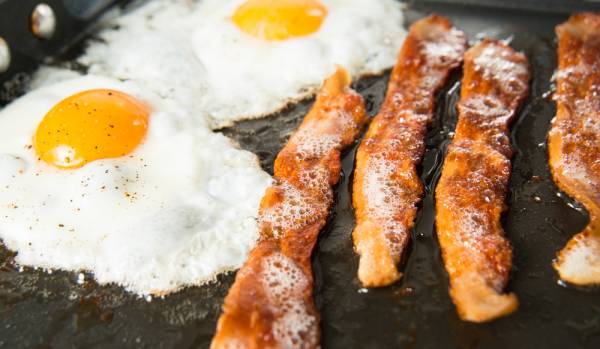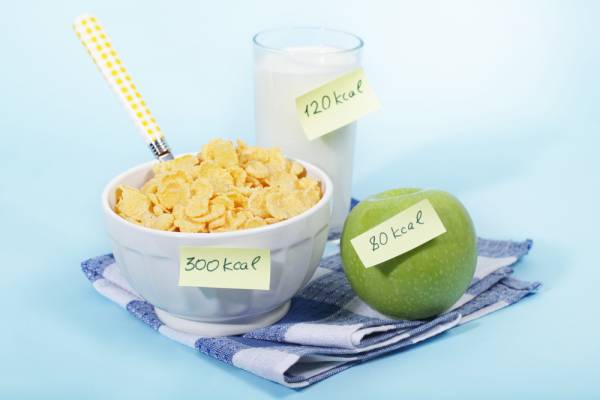In general, CrossFit culture recommends a paleo- or Zone-style diet. Is there any credibility surrounding this eating style?
A point for the Zone Diet is awarded since the books were based on actual scientific research by biochemist and author Dr. Barry Sears. The focus of this article will be to delve into the scientific works and research of Dr. Barry Sears in relation to the Zone Diet.
The Genetic Impact of Diet
Dr. Sears believes that while many conditions are heavily influenced by genetics, the immune system may also be severely impacted by diet – for better or worse. The concept he refers to most often in his research is what he calls silent inflammation.
When we think of inflammation, we usually think of pain and swelling mostly to do with joints. Silent inflammation is defined as inflammation within the body that is below the pain threshold. Without pain signals, silent inflammation often goes unchecked. Dr. Sears hypothesizes this type of inflammation eventually wears down the body’s interior defense mechanisms, leading to chronic inflammatory diseases such as diabetes and metabolic syndrome.
“I encourage you, too, to do a little research. Investigate on your own before you take the word of some talking-head doctor on TV, the side paragraph in a magazine, or even your fellow gym-mate.”
The hallmark of silent inflammation is the ratio of two particular fatty acids in the blood – the omega-6s and omega-3s. Each type of fatty acid breaks down into components that either drive silent inflammation (omega-6) or inhibit silent inflammation (omega-3). Keeping the ratio of omega-6 to omega-3 as low as possible keeps silent inflammation in check, according to Dr. Sears.
RELATED: Your Diet Can Change Your Genes
Limiting Your Intake of Saturated Fats
Dr. Sears also believes saturated fat consumption should be kept as low as possible. Saturated fats contain no omega-double bonds and are completely saturated with hydrogen atoms. They are typically solid at room temperature (think butter and lard), while omega-3s and omega-6s are usually liquid at room temperature.
The incidence of chronic inflammatory diseases has increased over the past several years along with the consumption of refined carbohydrates and vegetable oils. Common vegetable oils contain about 50-75% linoleic acid, an omega-6 fatty acid that can be broken down into pro-inflammatory counterparts. Oils such as olive oil, butter, and even lard contain only about 10% linoleic acid but also contain saturated fats.
RELATED: The Best Research on Body Fat, Losing Fat, and Eating Fat
The enzymes required to break down fats into pro-inflammatory components are delta-6 desaturase and delta-5 desaturase. If these enzymes are disabled, inflammation can be contained. Both of these enzymes are deactivated by the breakdown products of omega-3s, a wrench in the gears of the chemical reaction.

Conversely, these enzymes are activated by insulin, which fuels the inflammation fire. Anyone who knows anything about refined carbohydrates knows eating them is coupled with an almost immediate insulin spike. The spike in insulin exacerbates silent inflammation by activating enzymes that metabolize omega-6 fatty acids.
Luckily, the body has ways of coping, at least for a while. Silent inflammation initially takes place in the adipose tissue or fat cells. When the fat cells become overwhelmed with insulin and inflammation, the body produces more fat cells, leading to obesity. As the fat cells become damaged from excess fatty acids, they lose their ability to cope with insulin spikes and stop responding altogether. This is known as insulin resistance.
Calories Count
So the goal and definition of the Zone Diet is “anti-inflammatory nutrition.” Dr. Sears recommends a diet emphasizing fruits and low-glycemic vegetables, low-glycemic (if any) grains, and fat sources composed mainly of omega-3 fatty acids. Fat sources could include olive oil, nuts, seeds, some fish, and a little poultry. Many fish also contain omega-6 fatty acids and beef and other meats contain saturated fats, both of which Dr. Sears has determined to be inflammatory, which is why meat is seemingly restricted.
“Dr. Sears states that calorie counts should increase for those who are active, but I still think his numbers are too low.”
Another Zone Diet recommendation is the approximate daily caloric intake of 1,300-1,600 calories based around a 30:30:40 fat-to-protein-to-carb ratio. Calorie counts should be based on lean body mass with increases for highly active males and females. These recommendations are similar to the Mediterranean Diet in the fat recommendations and meat avoidance, but differ in the carbohydrate modifications made by the Zone Diet to omit bread and most grains.

RELATED: Calculate How Much You Burn and Avoid Unwanted Calories
Is the Zone Diet on Point or Outdated?
After reading his papers on the topic, I tend to agree with most of what Dr. Sears has to say. I fully agree that the avoidance of high-glycemic grains is a healthy move, and a focus on fruits and vegetables can’t hurt anyone.
Dr. Sears believes that while many conditions are heavily influenced by genetics, the immune system may also be severely impacted by diet – for better or worse.”
Where I tend to disagree with the Zone principles is on the avoidance of saturated fats. I think high-quality saturated fats found in grass-fed beef, eggs, and chicken are nutritionally valuable. I guess I can cut Dr. Sears a break since most of his research was conducted in the time period when saturated fat was on the USDA food pyramid naughty list. Also, I think more flexibility in calorie counts is appropriate, especially for those who are active. Dr. Sears states that calorie counts should increase for those who are active, but I still think his numbers are too low.
RELATED: How to Create a Healthy Relationship With Your Nutrition
Overall, there are worse methods of eating than the Zone Diet. Dr. Sears is eloquent and a lot of his ideas make sense. The best part about his work is he actually has published scientific research to back some of it.
I encourage you, too, to do a little research. Investigate on your own before you take the word of some talking-head doctor on TV, the side paragraph in a magazine, or even your fellow gym-mate. Do a little reading, and figure out what works and makes sense for you.
References
1. B. Sears, The Anti-Inflammation Zone, Regan Books, New York, NY, USA, 2005.
2. C. N. Serhan, “Resolution phase of inflammation: novel endogenous anti-inflammatory and pro-resolving lipid mediators and pathways,” Annual Review of Immunology, vol. 25, pp. 101-137, 2007.
3. R. R. Brenner, “Hormonal Modulation of δ-6 and δ-5 desaturases: case of diabetes,” Prostaglandins Leukotrienes and Essential Fatty Acids, vol. 68, no. 2, pp. 151-162, 2003.
4. T. Pelikanova, M. Kohout, J. Base, et al., “Effect of acute hyperinsulinemia on fatty acid composition of serum lipids in non-insulin-dependent diabetics and healthy men,” Clinica Chimica Acta, vol. 203, no. 2-3, pp. 329-337, 1991.
5. R. H. Unger, “Weapons of lean body mass destruction: the role of ectopic lipids in the metabolic syndrome,” Endocrinology, vol. 144, no. 12, pp. 5159-5165, 2003.
6. B. Sears, C. Ricordi, “Anti-Inflammatory Nutrition as a Pharmacological Approach to treat Obesity,” Journal of Obesity, Vol. 2011, pp. 1-14. 2010.
Photos courtesy of Shutterstock.






